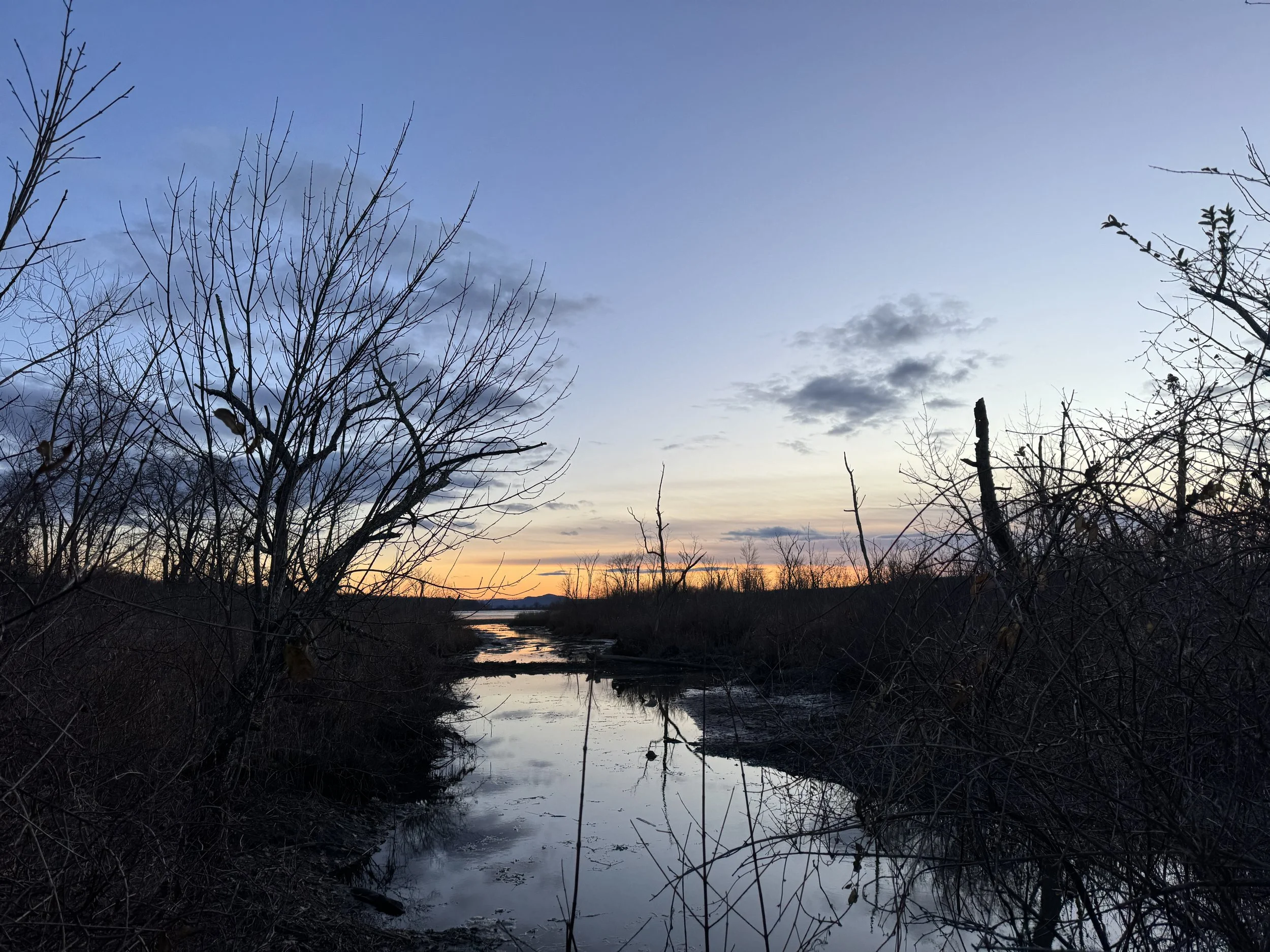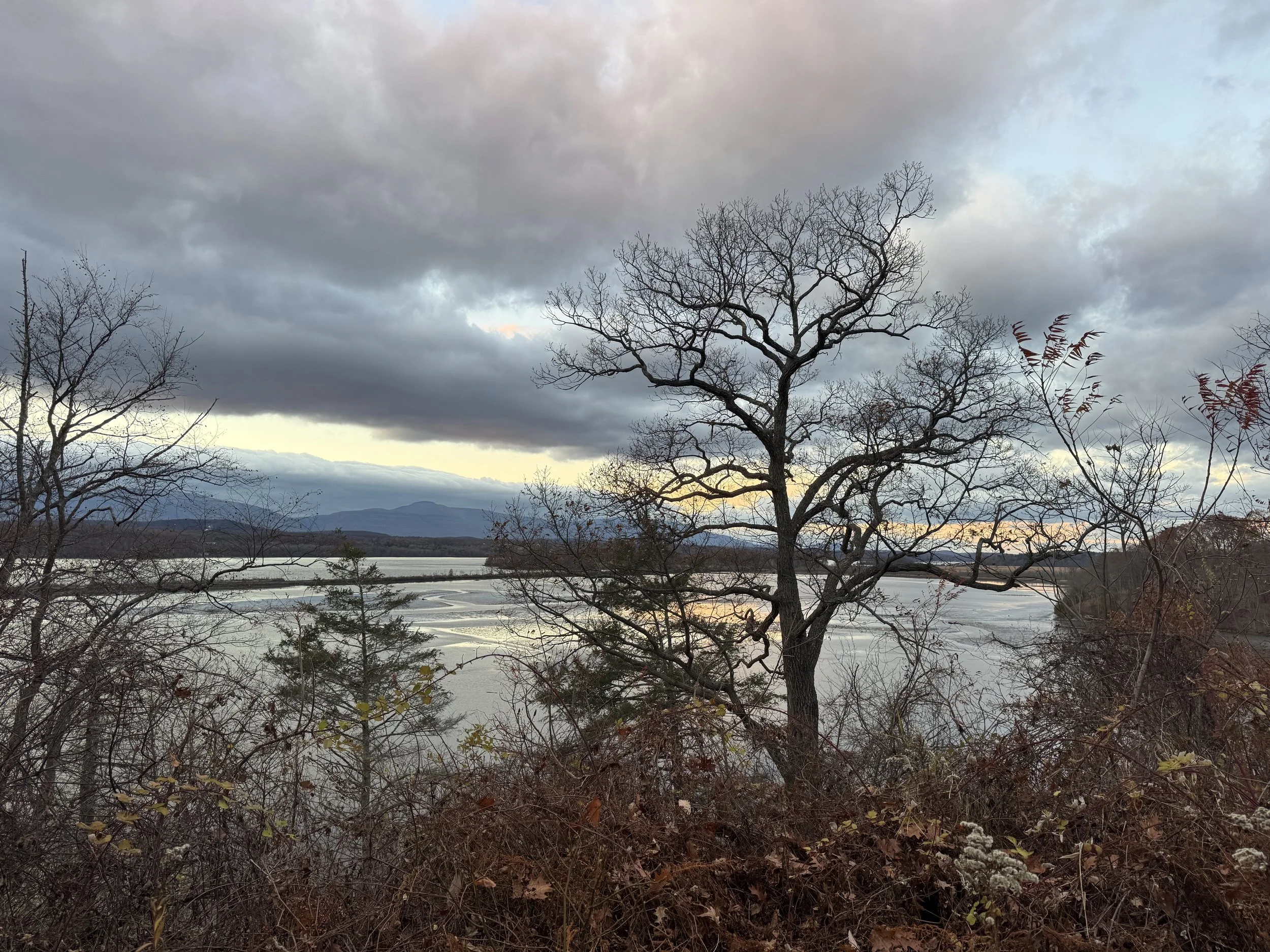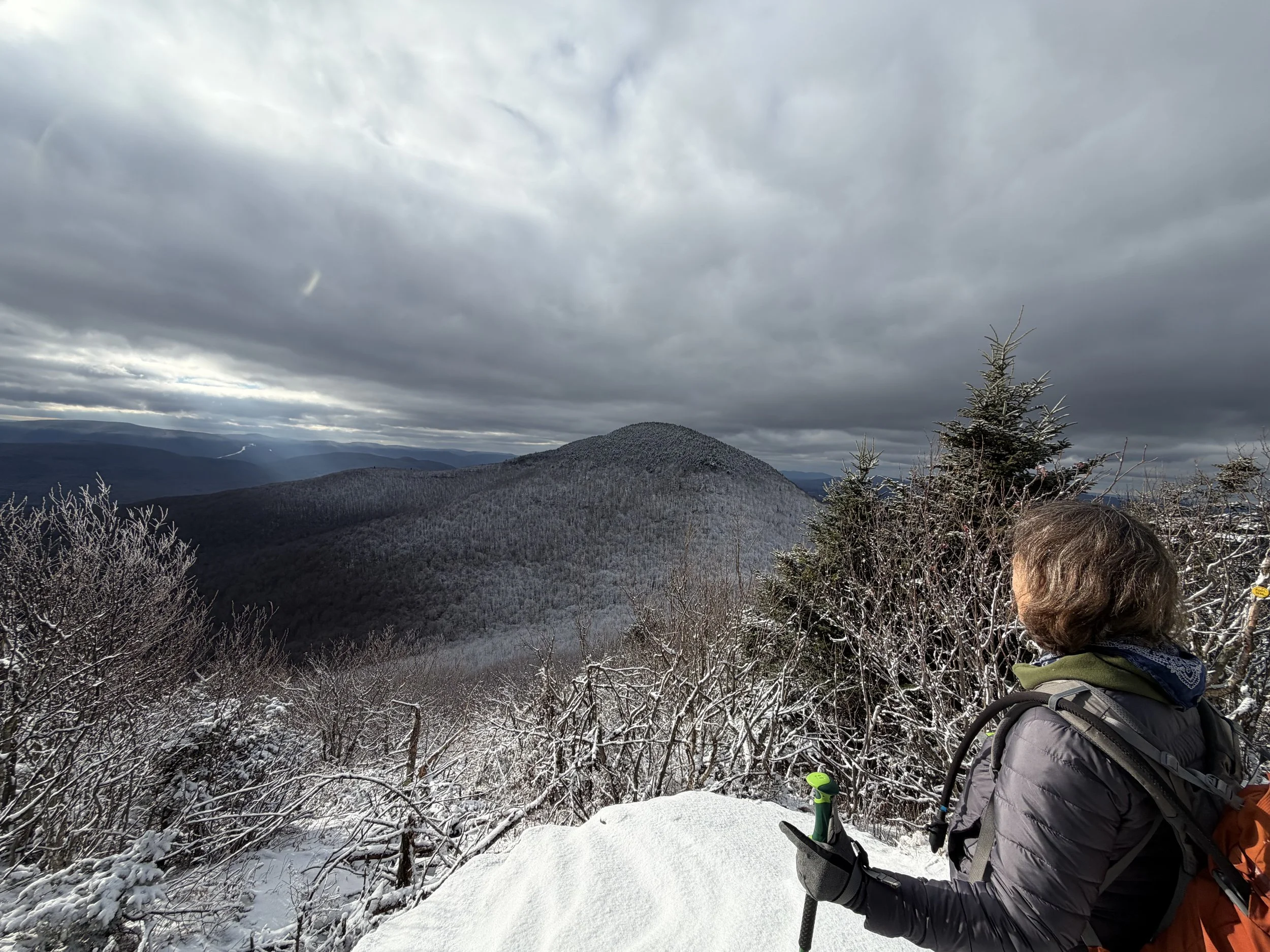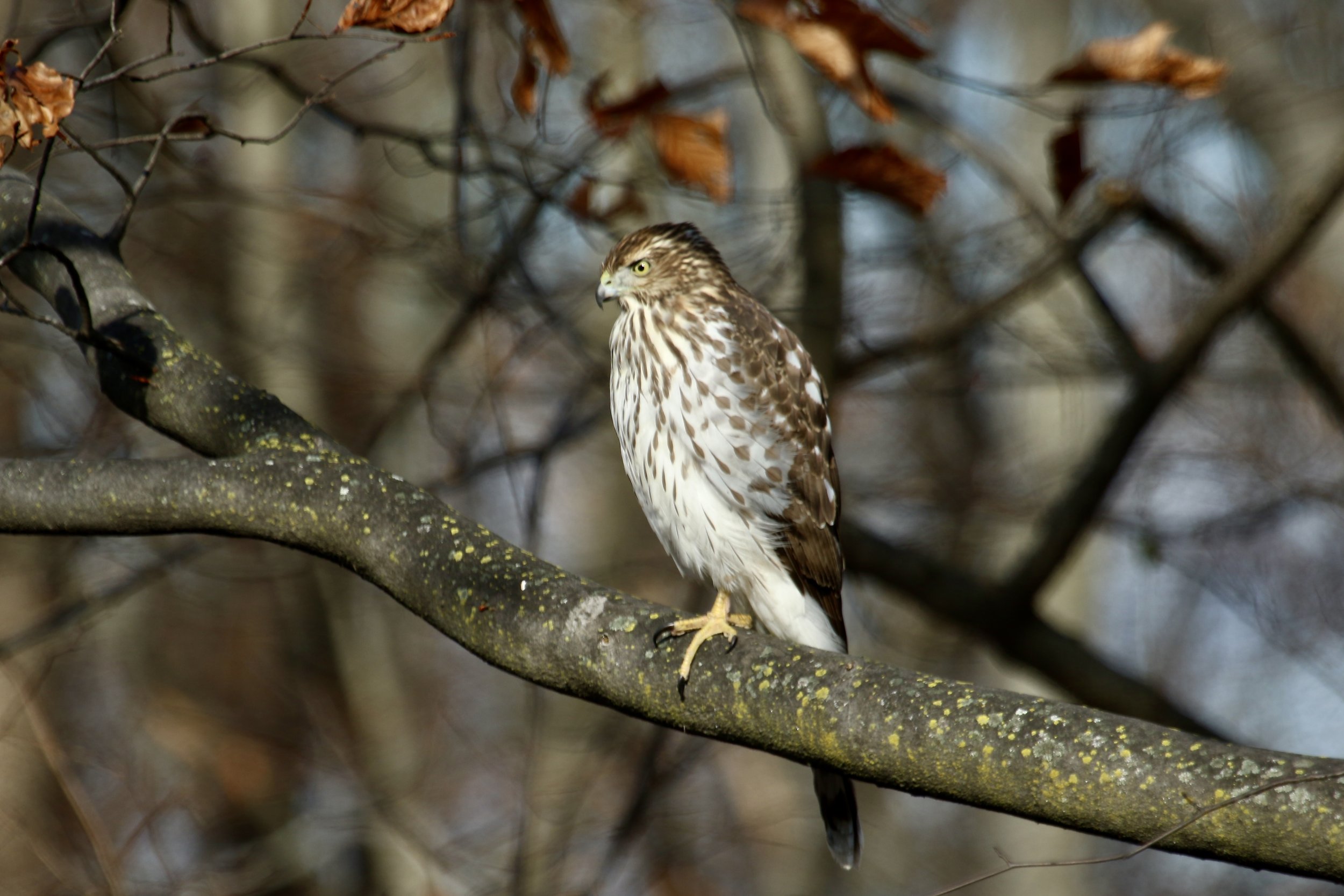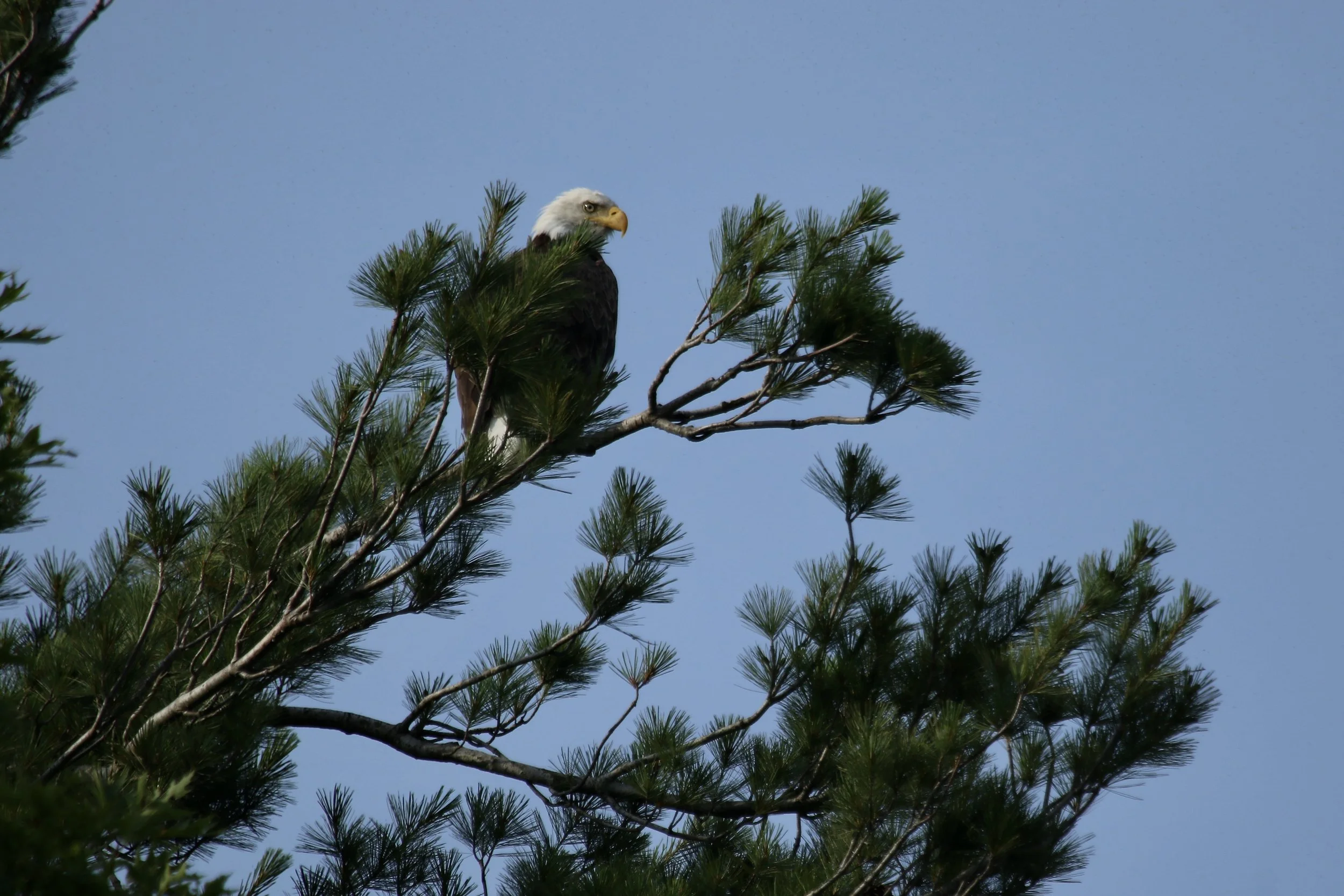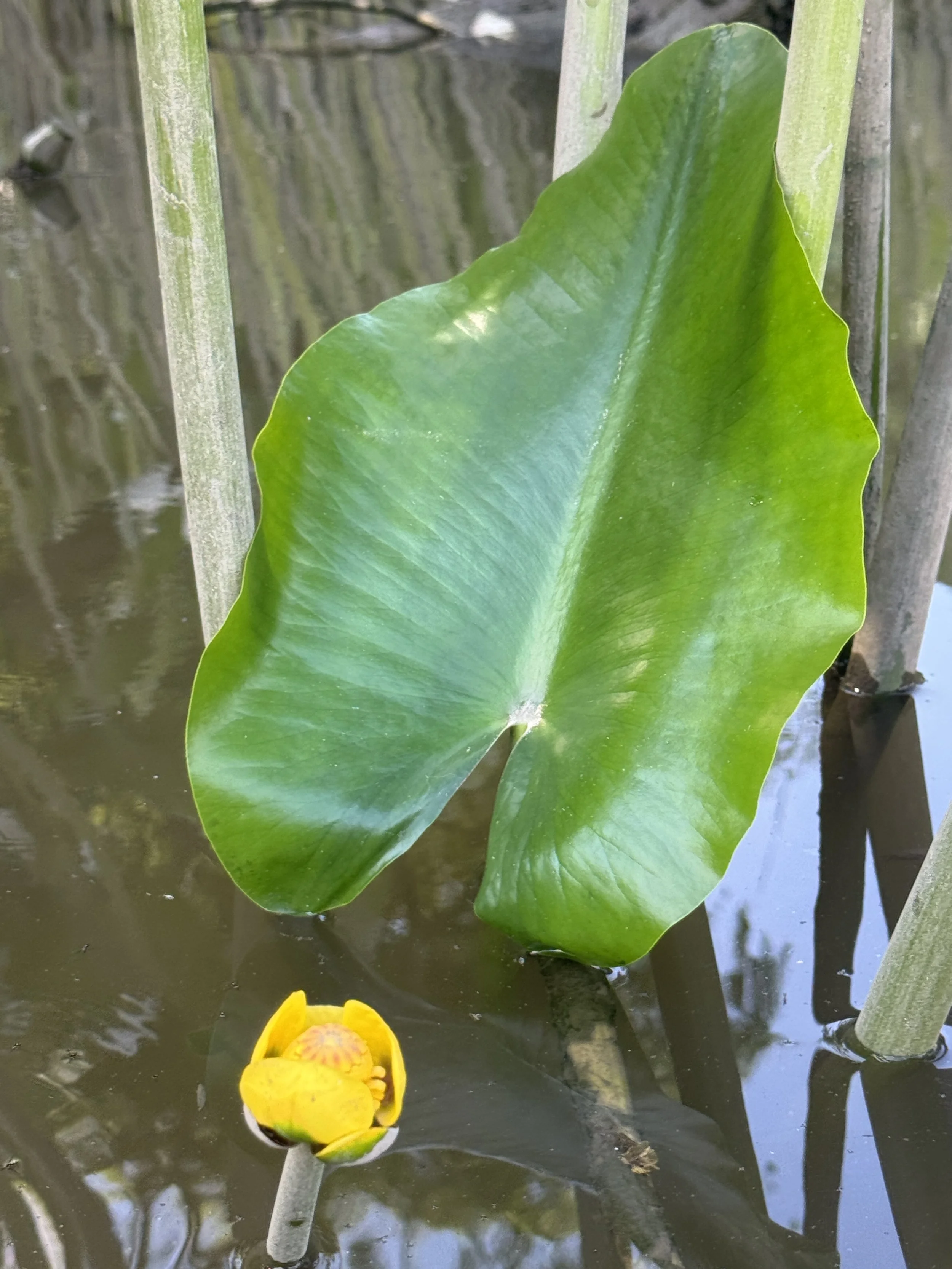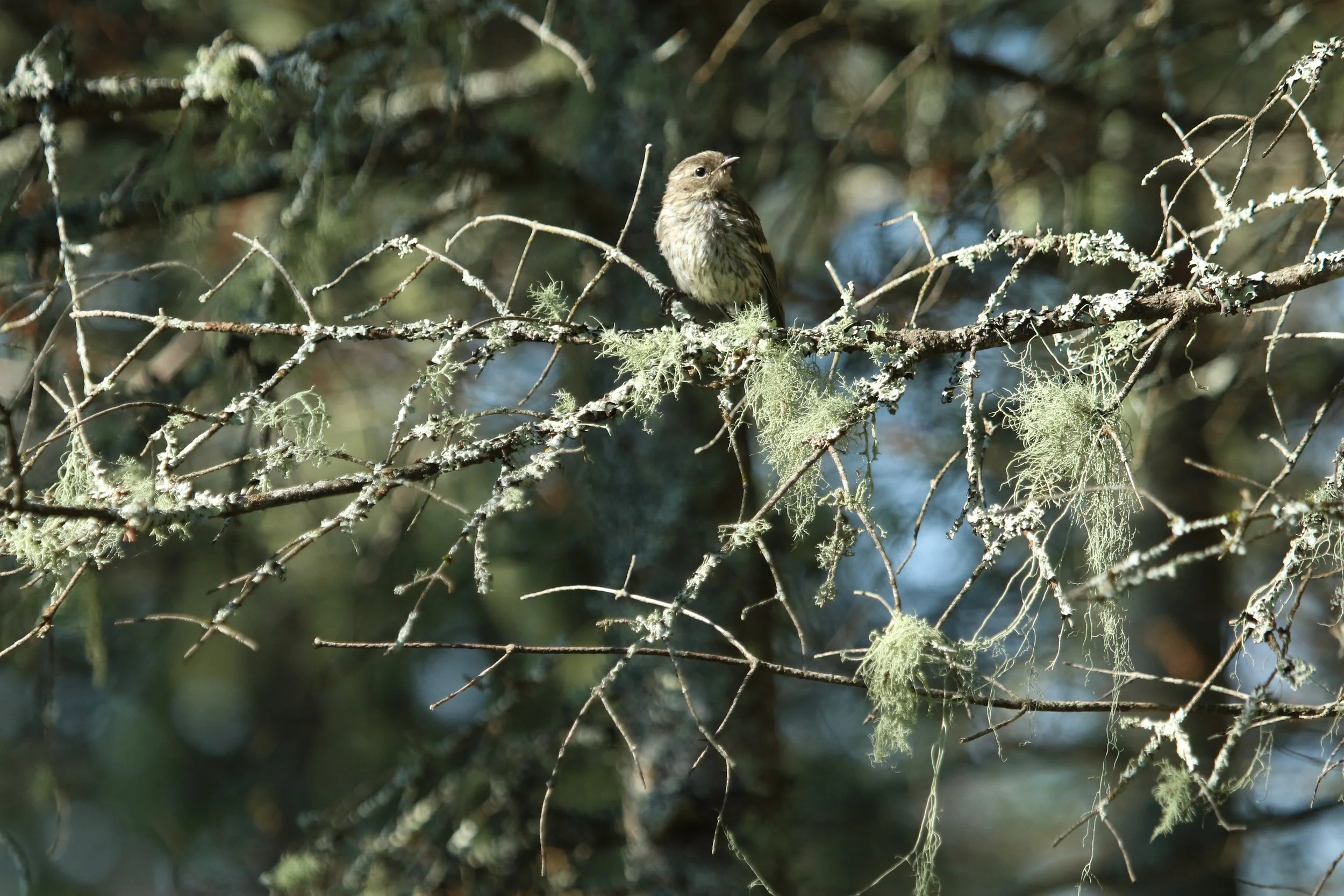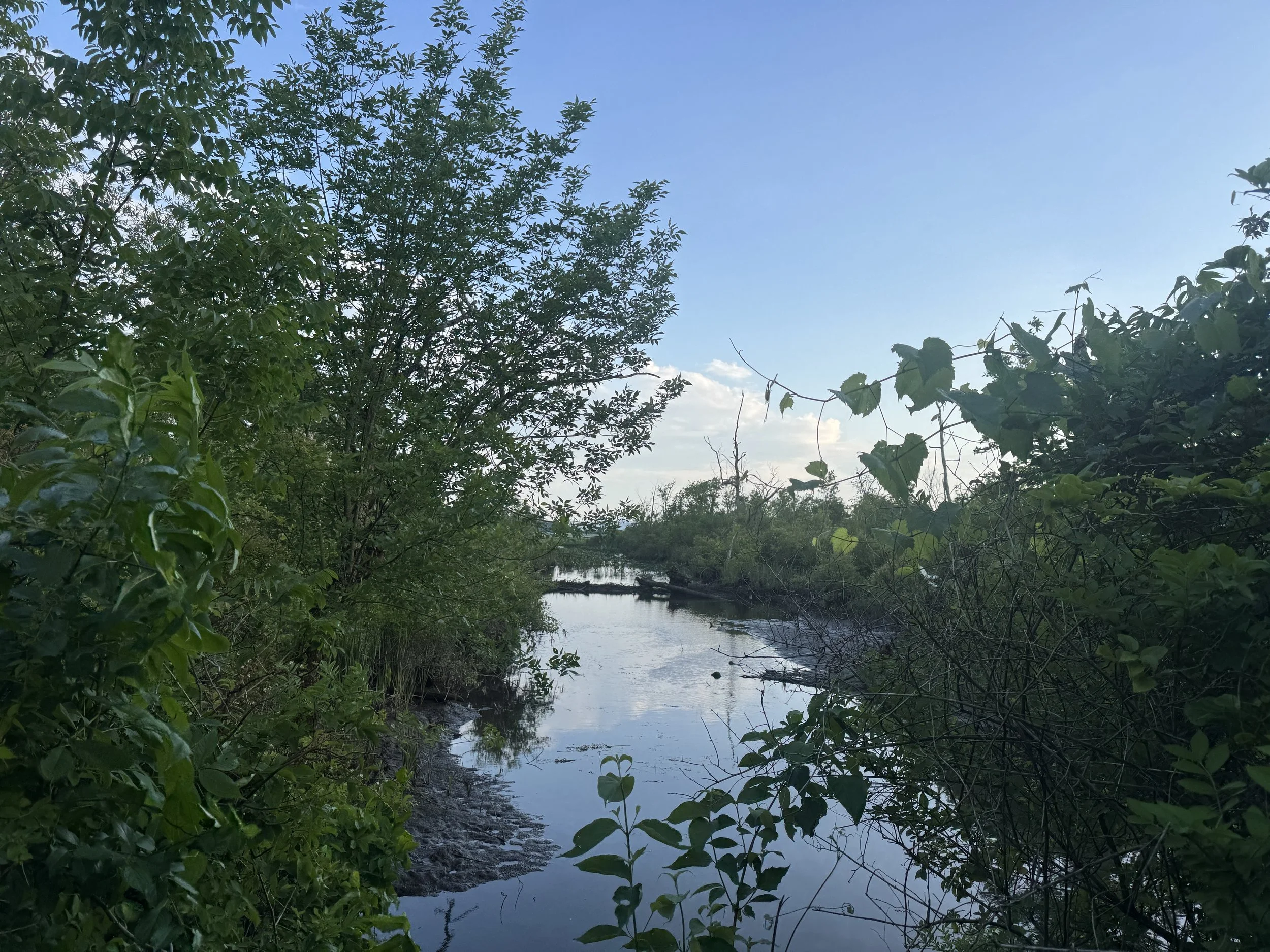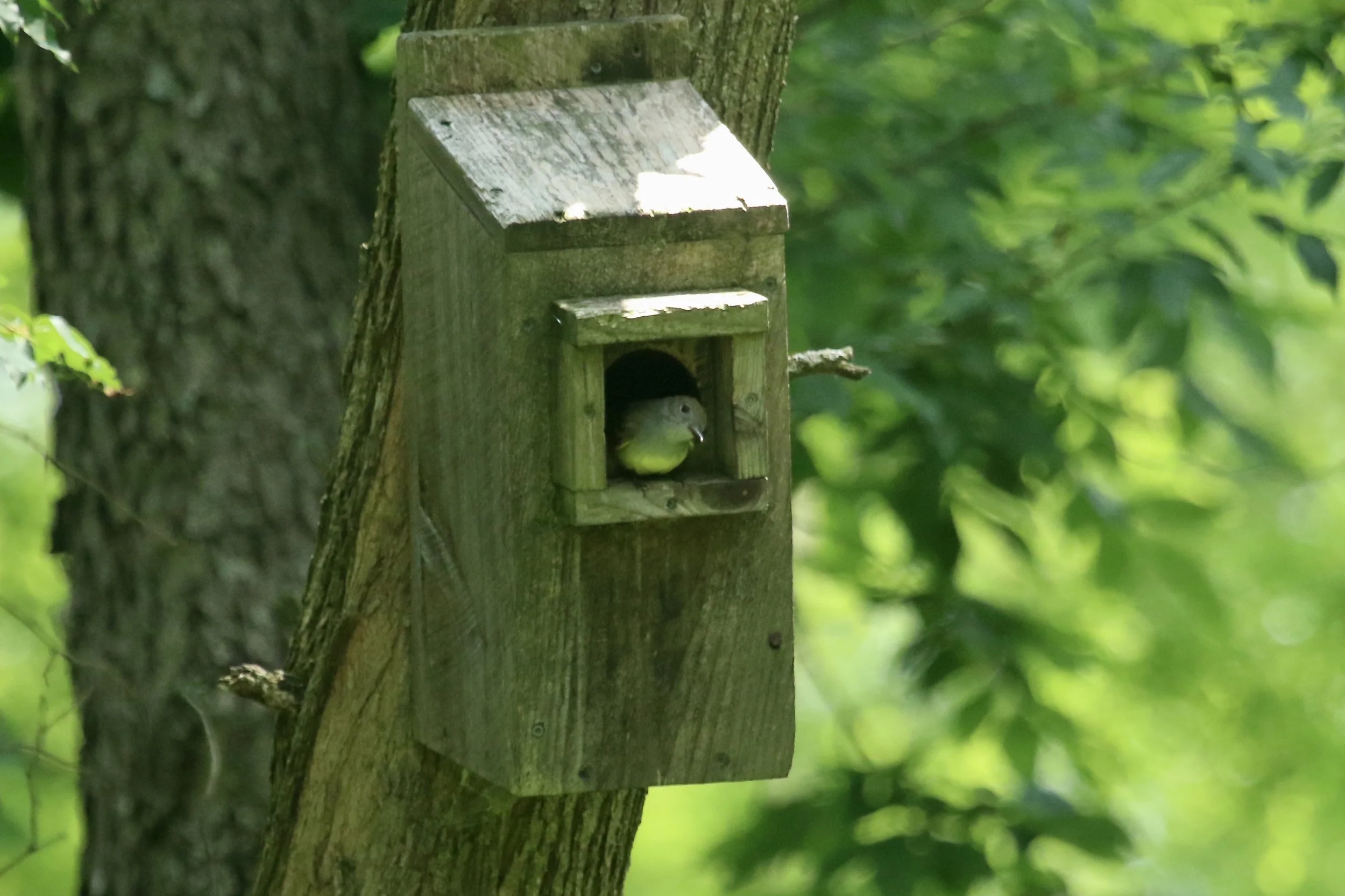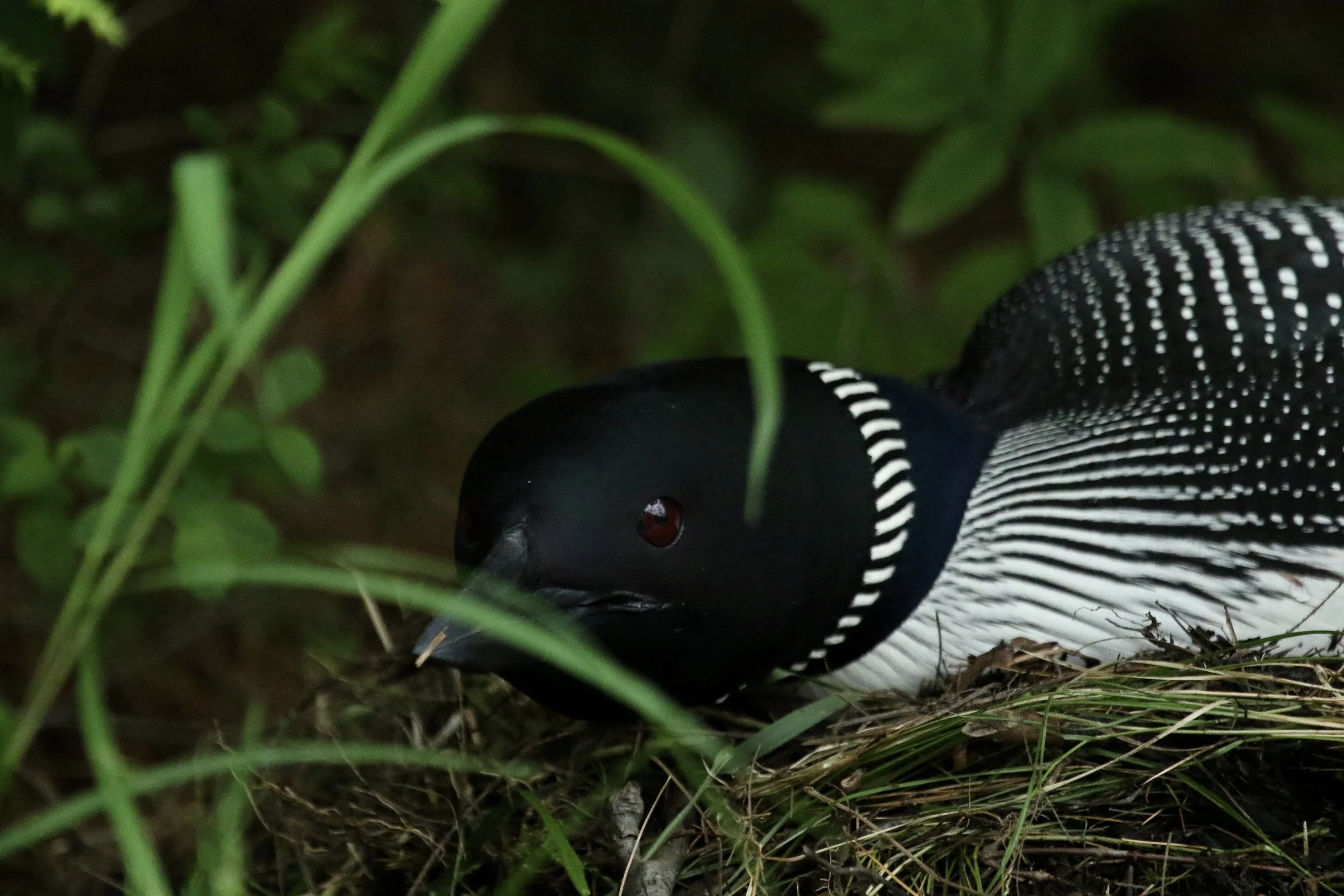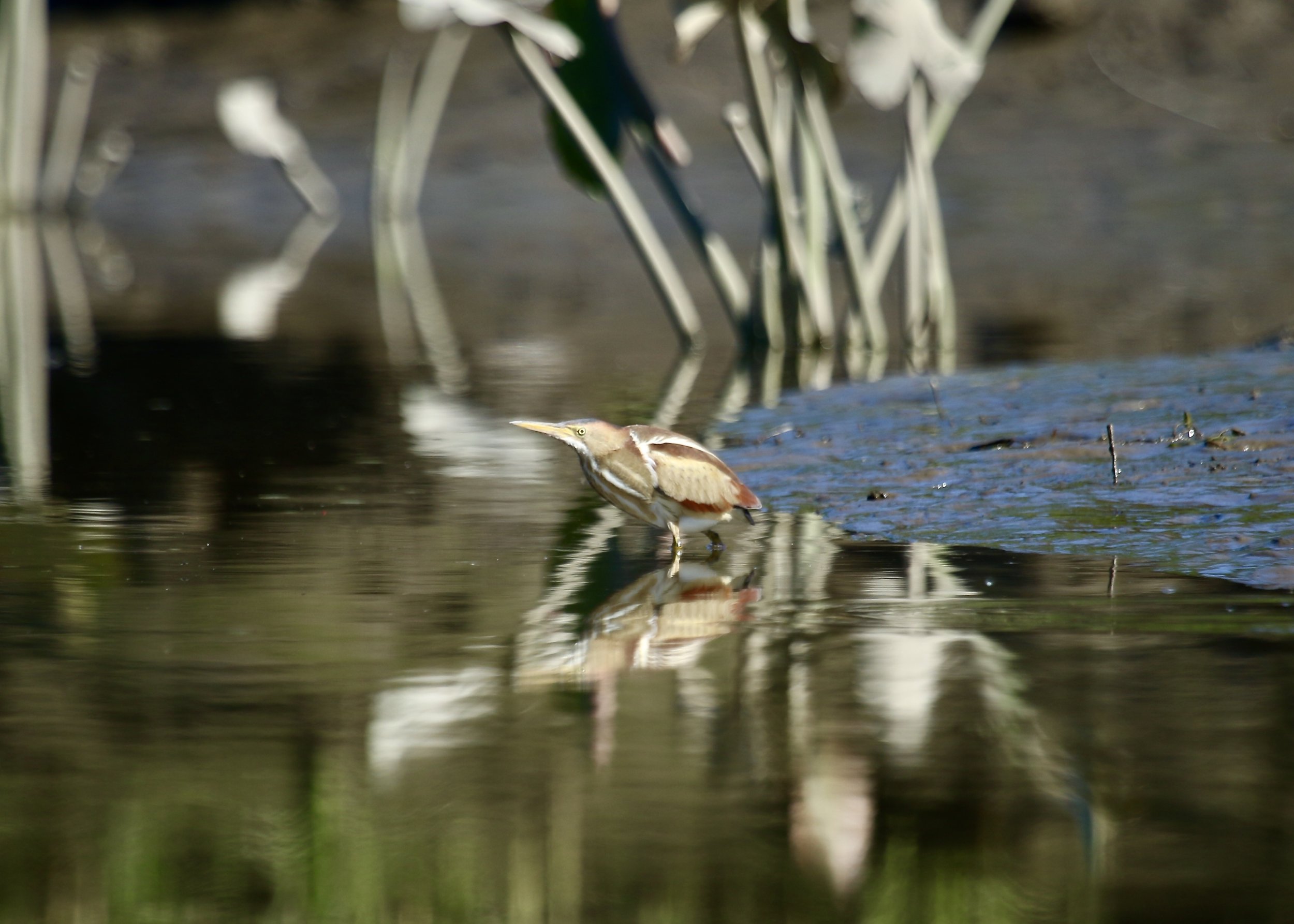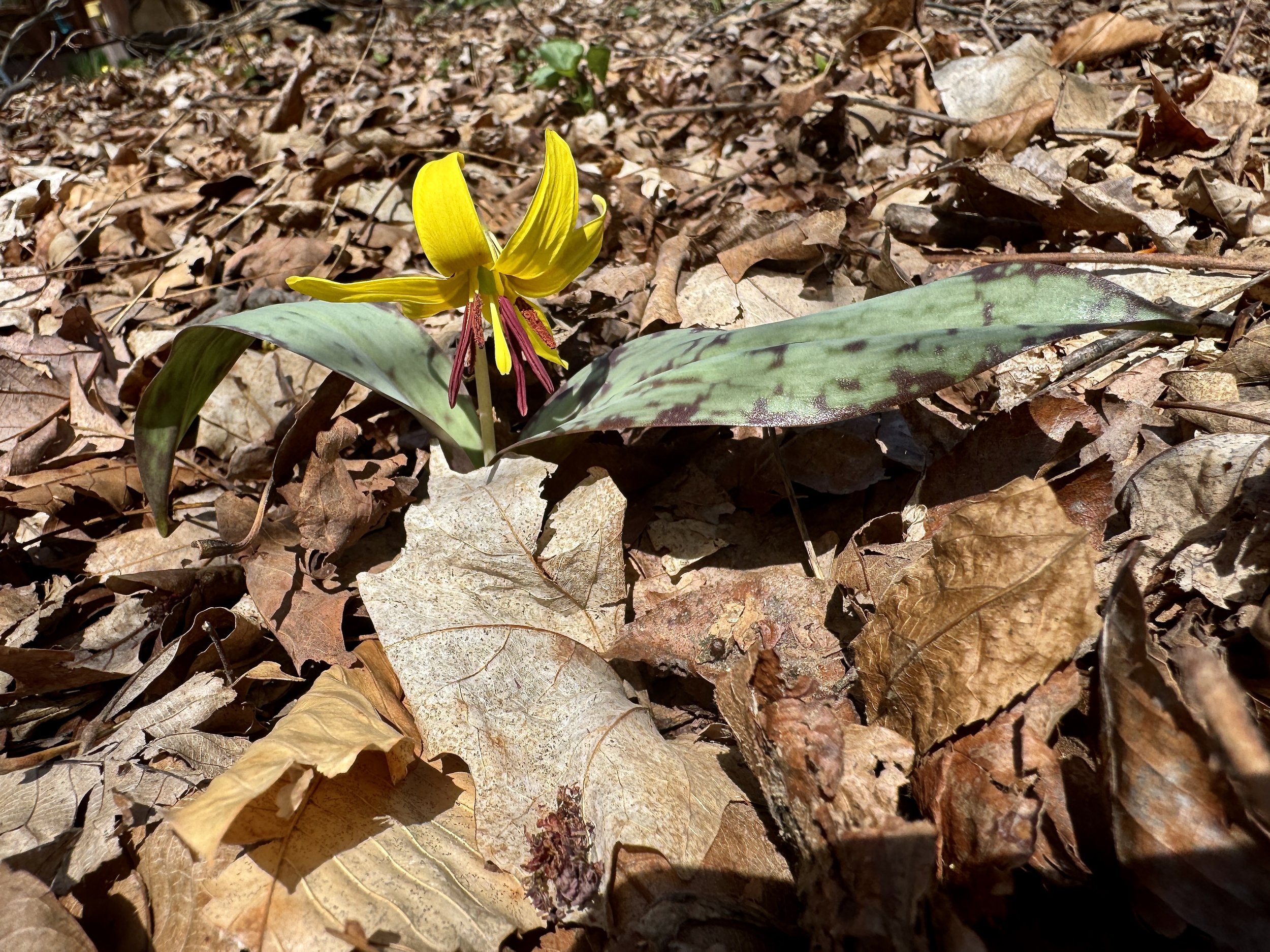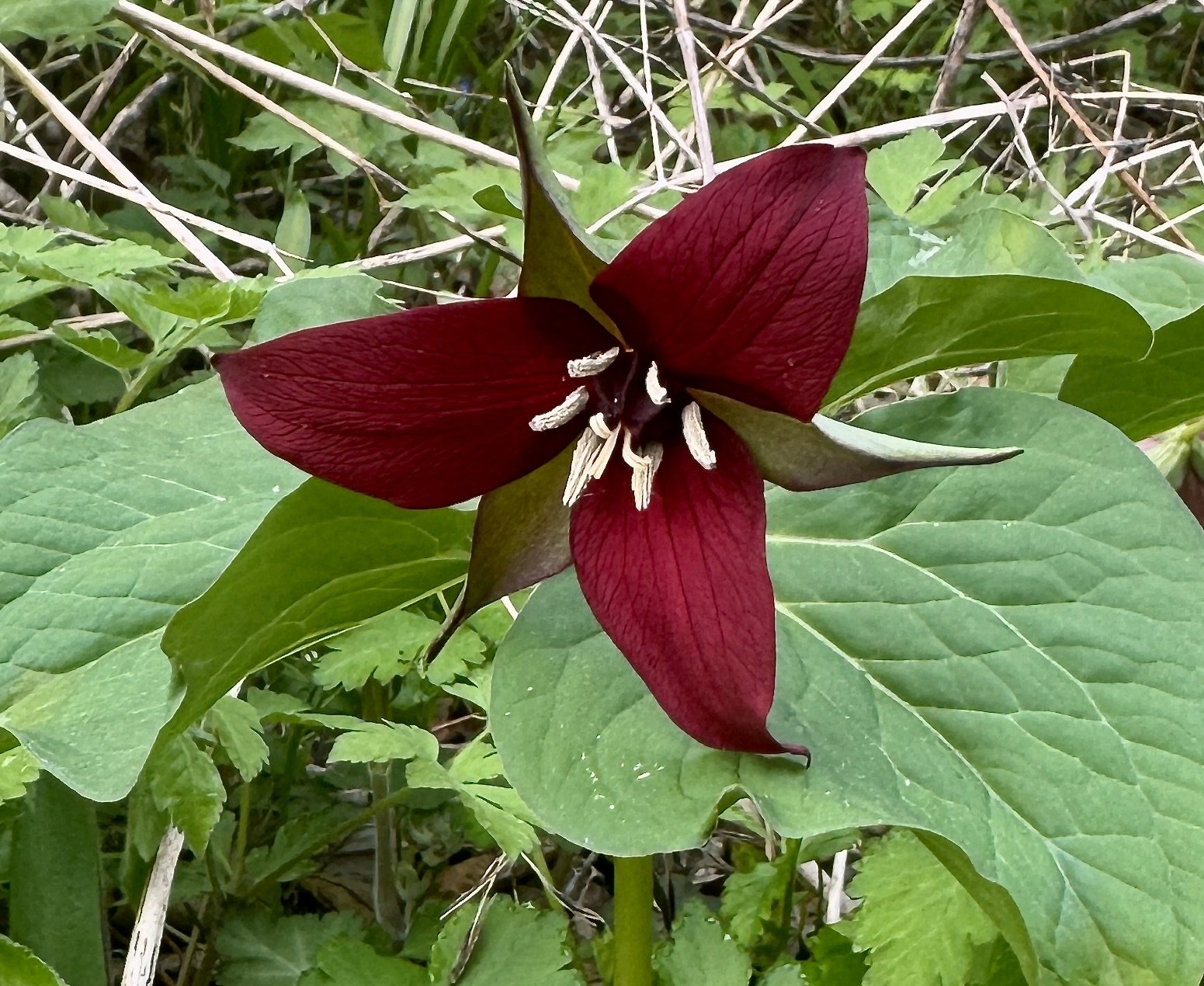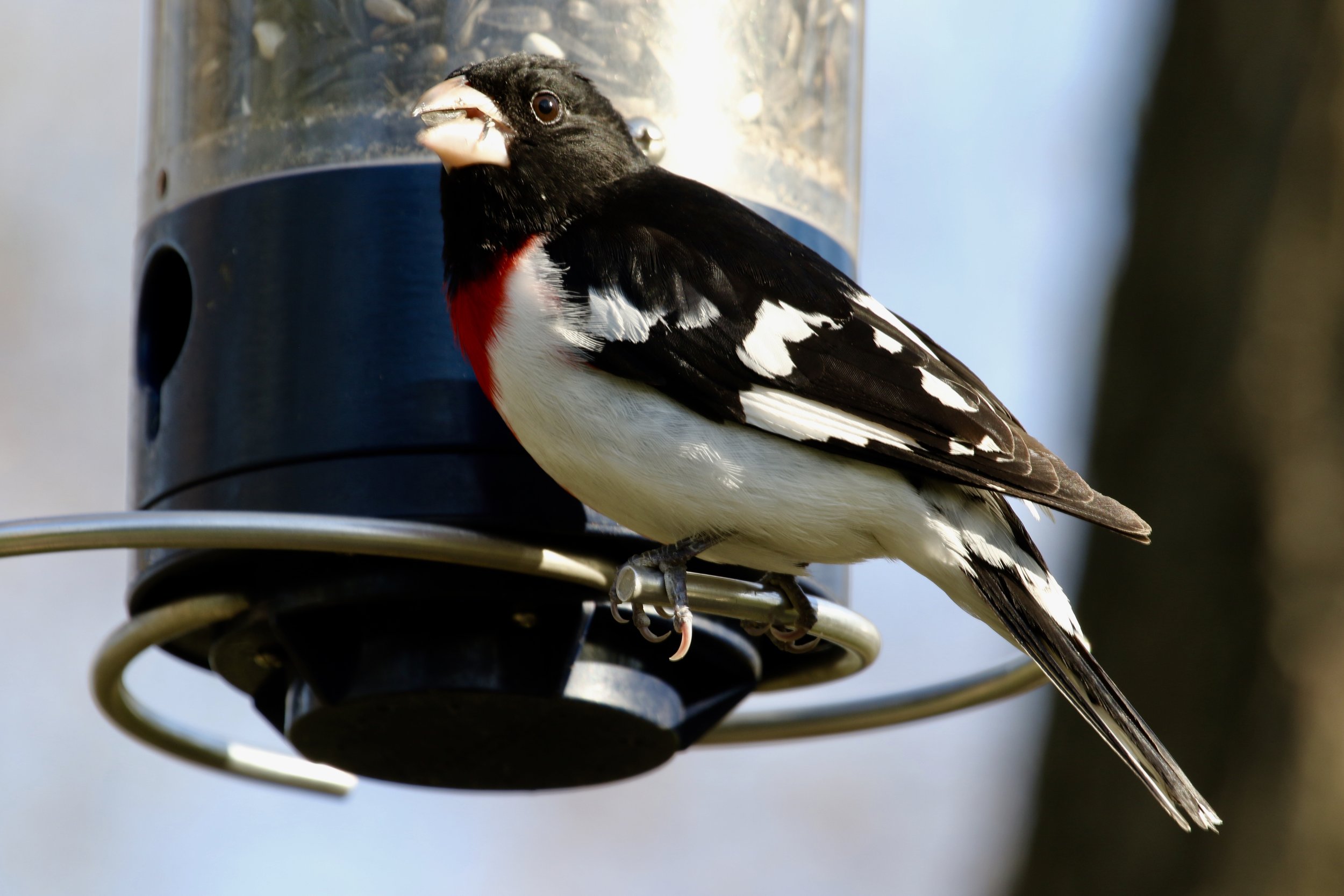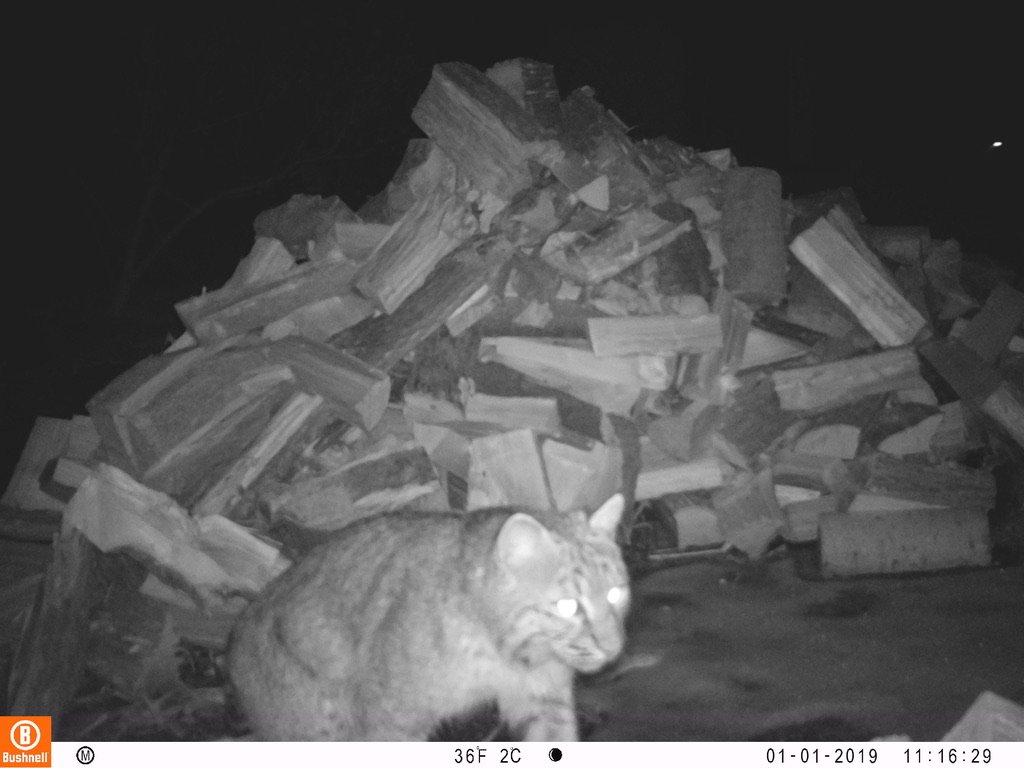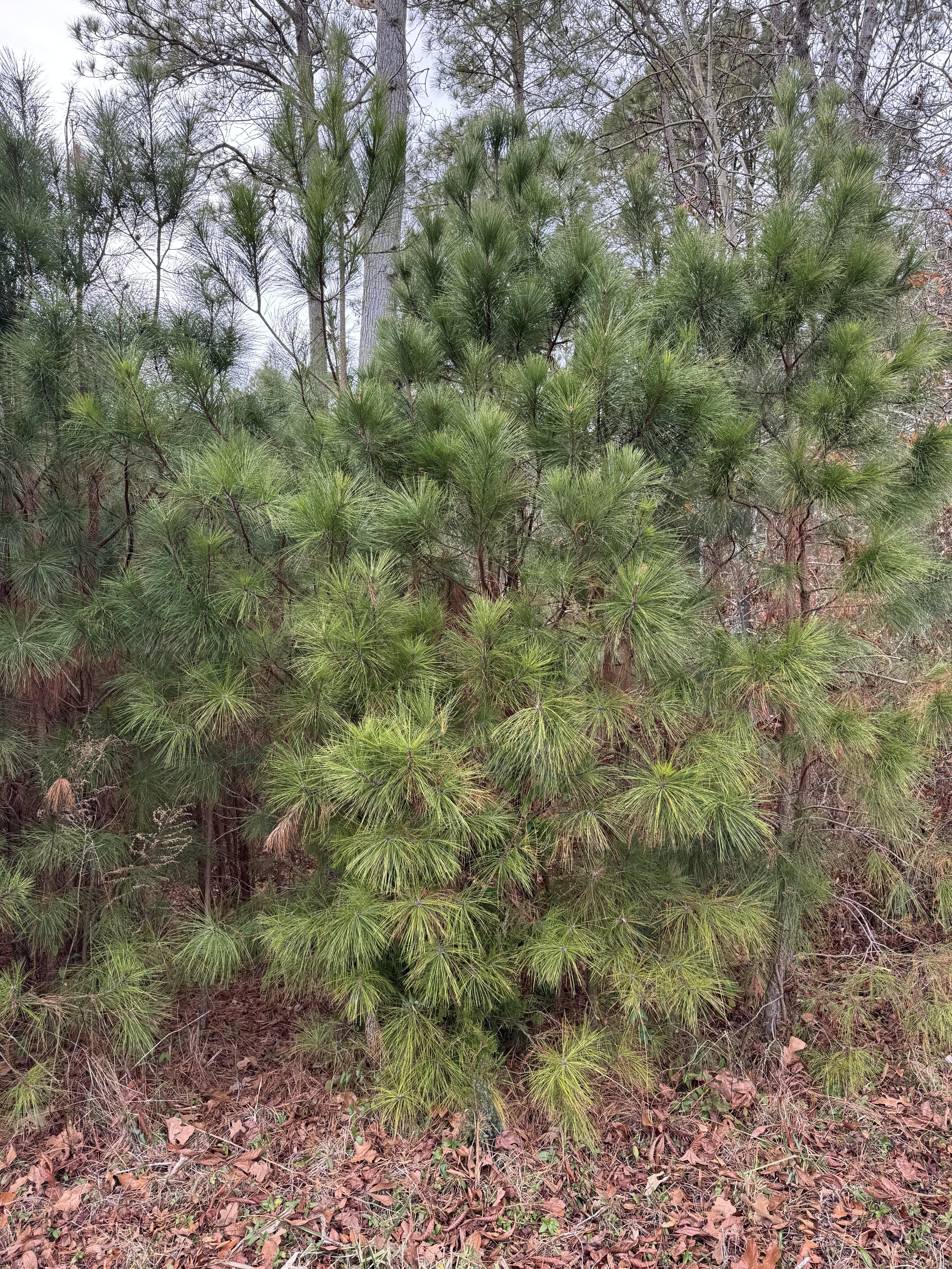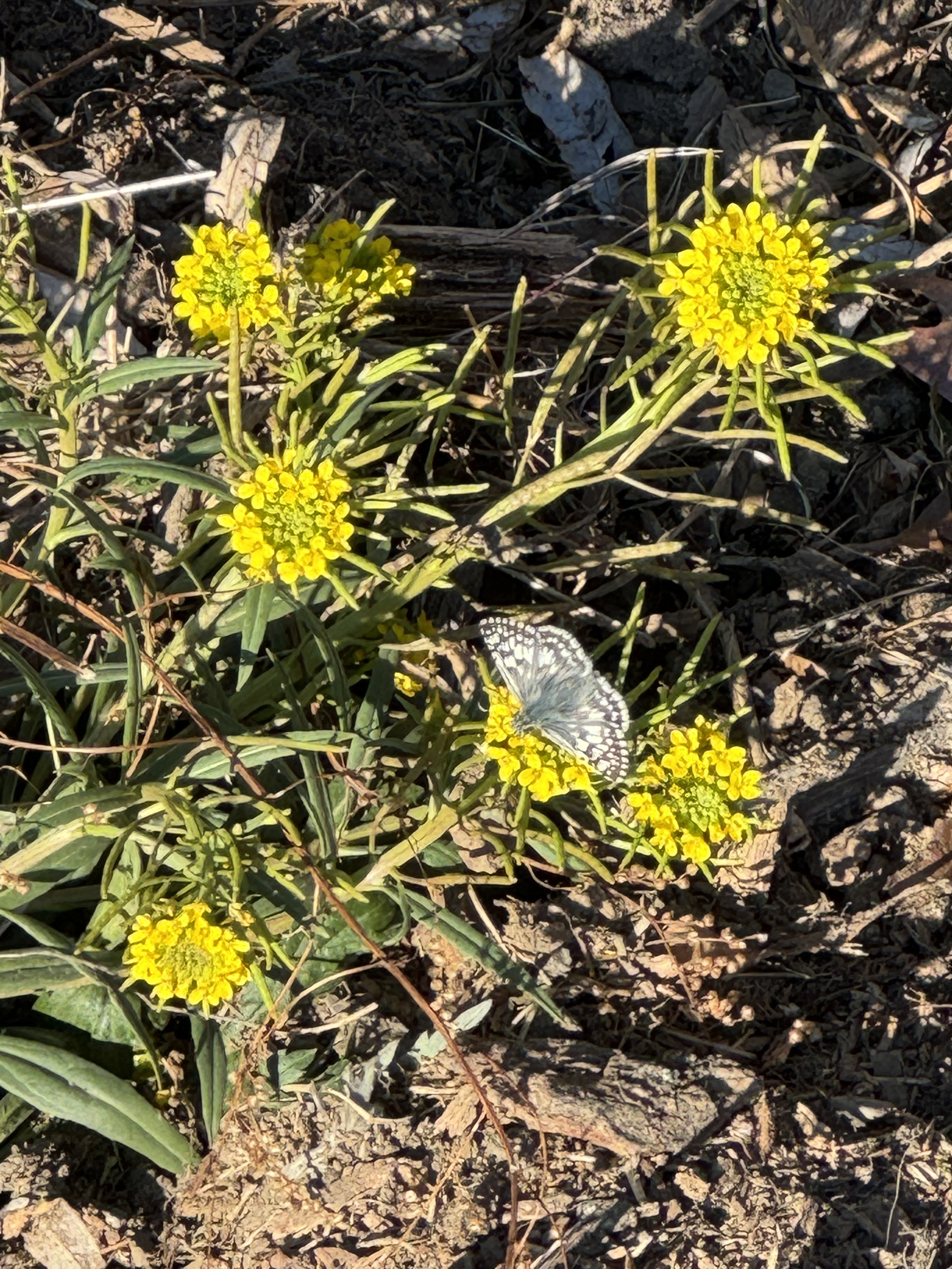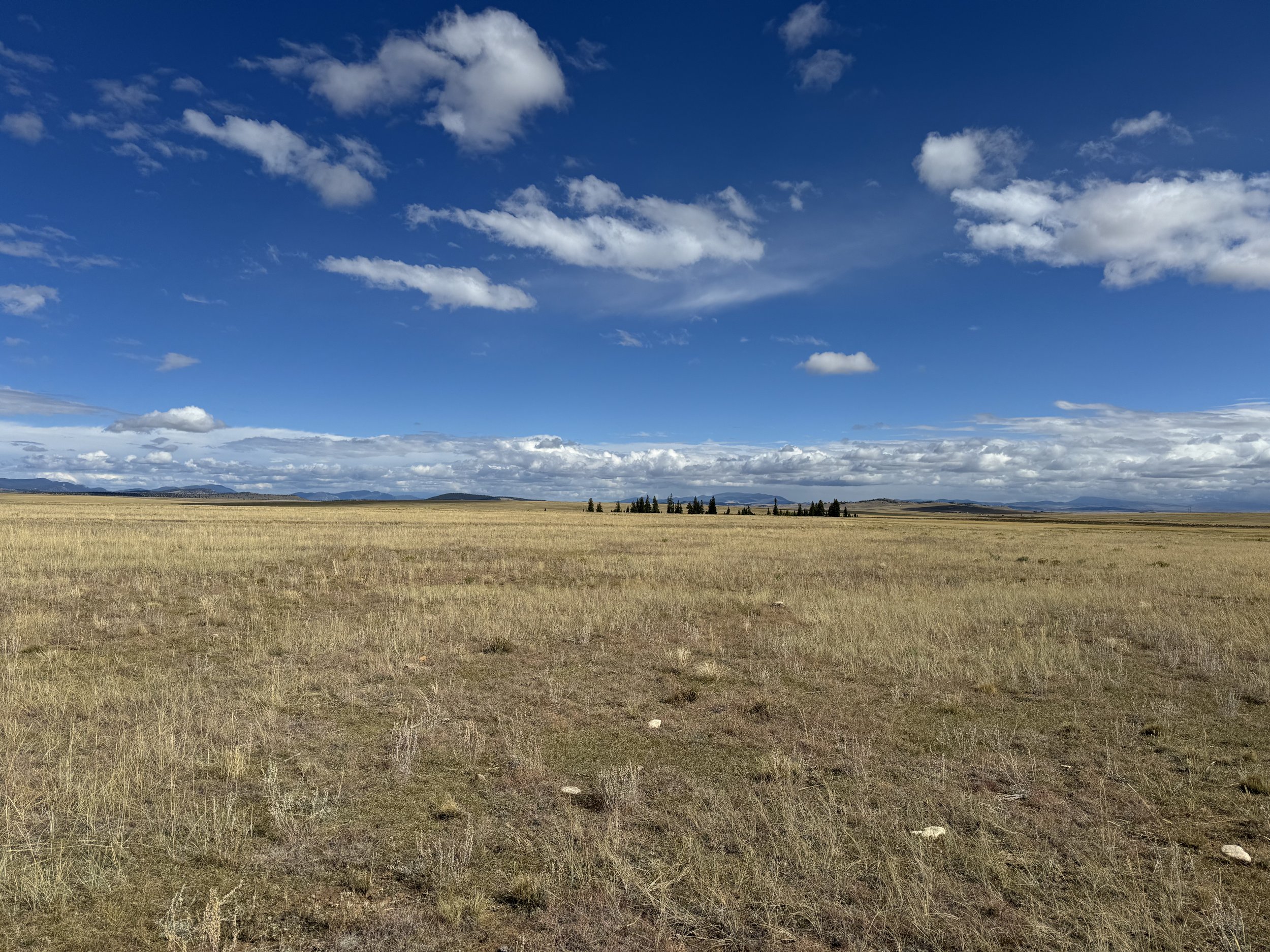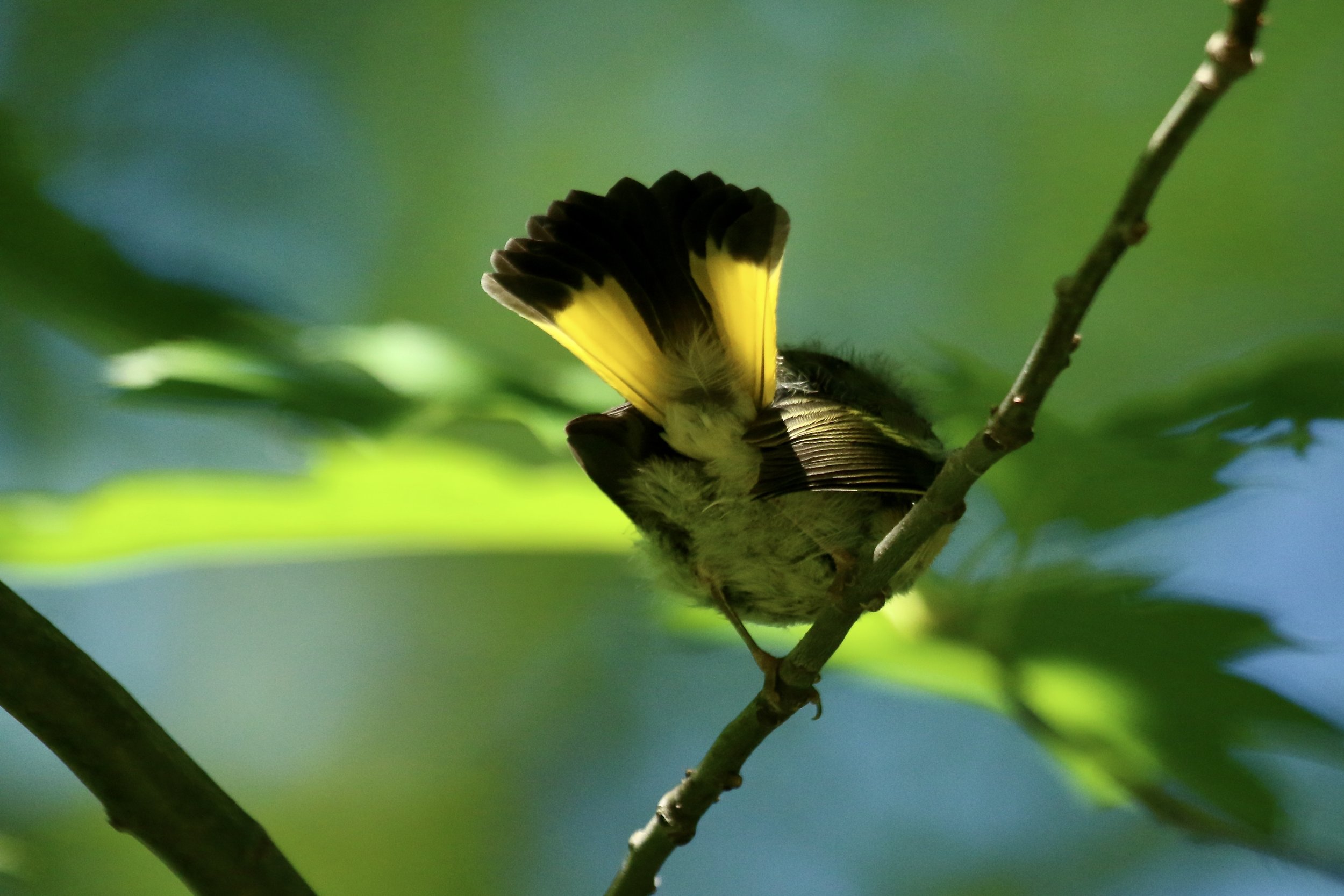ALMANAC
Month-by-month reporting from the natural world, mostly the Hudson Valley or wherever I find myself.
November is Surprises
Sunset off Cruger Island
Shifting temperatures in November
I am sure no one has noticed that I skipped August, September, October…what happened? Well, life. But also for August and September I was in France (my second home) and though I am always paying attention to birds, to trees and flowers it felt different than being attuned to the rhythms of a place I know as deeply as I do the Hudson Valley. France was hot in August—so hot it made the news in the New York Times. But I didn’t feel that heat in my historical bones (don’t get me wrong, I was hot). So the realization is that an almanac needs me to stay put.
November I was home-home in the Hudson Valley. The month is a shoulder month, beginning in fall and ending in winter. I love when the leaves are finally all down and I can see the shape of the land, the contours of streams and hollows. We had our first below freezing day on November 10, and since then the temperatures have yo-yoed from cold to warmer through the month. There was snow in the Catskills (making hiking fun).
A walk at the end of the month out Cruger Island Road the wind beat at my back and I thought: I did not wear enough layers. After all these years, I learn again that come the end of November, I need flannel lined pants, need long-underwear. It’s cold out there and though we have yet to have snow, flakes tumble from the sky from time to time.
On that walk there were few birds, but then too some special, unexpected birds, birds that maybe were also thinking: I should have worn my flannels. Or, rather, I should have headed south, or, I wish I’d headed south sooner. Maybe they won’t leave, will make a cold living while also giving up the dangers of migration. Among these were a Kingfisher, flying in a razor-sharp line across the bay, a Hermit Thrush, startled by its own existence, and my favorite, the Rusty Blackbird. In fall is when they put on their rusty caps, looking as handsome as they can be.
November I turn to the woods to cut up downed trees, to split wood, to keep the fire going. Working with wood allows me to be in the woods, where I hear birds passing over (Evening Grosbeak!), or witness a Cooper’s Hawk waiting for its perfect target from the bird feeder. Stay warm and well fed, my friends.
The South Tivoli Bay and in the distance the Hudson River
Looking out toward Black Dome, Catskills
Cooper’s Hawk patiently awaiting a meal
The Still Heat of July
Eagle off Cruger Island
July is heat and stillness
The still heat of July.
If my favorite months are October and May, where there is movement and coolness, maybe my least favorite month is July, where there is heat and stillness. Though that seems unfair to have favorites it tells me what gives me pleasure in the natural world: a sense of aliveness, of being inside of the natural world. And in July, the natural world wants to keep me away because at least the bird world is busy feeding young, protecting young, hiding young as they grow into their wings and into the world. They want me nowhere near.
So I sat still in July—and often had to due to the heat—and watched as the Great-crested Flycatcher who had set up shop in a box in my front yard tended to their young. The parents came and went nonstop all day long. Those babies were insistent and hungry. If I had been a keener observer, like some of my foremothers (I’m thinking of Margaret Morse Nice in the 1930s in Ohio with her Song Sparrow studies counting the number of times a bird would sing in a day), I would have been counting how many bugs were being brought in. But I do not have that sort of patience.
I also spent time on the water in the Tivoli Bays—one place to find cool in July—where the Eagle soared overhead and the Least Bittern tip-toed out. I confess my greatest hope is to see baby Bitterns on the flats but no luck this year. The spatterdock came into bloom and the invasive water chestnut spread (the Tivoli South Bay is a blanket of water chestnut), and the day lilies burst into bloom.
I was lucky enough to head north to clean water, smoky air (fires in Canada are everywhere this summer) and the silence of the Canadian wilderness, just east of the Quetico with my cousin Polly. There: Loons. Moose. Otter. Beaver. And lots of warblers who bred there among the red pines and wild blueberries and bunchberry dogwood, and were soon to head south. I’ll be waiting for them to sail through in a few weeks.
Spatterdock in bloom
Beautiful northern sunsets thanks to wildfires
Paddling Northern Lights Lake
Juvenile Cape May getting eady to head south
June is Babies!
View south out the South Tivoli Bay (June)
June is the month of babies
June is babies. Baby birds, those first clutches of Robins emerging in the world. Or, birds setting up shop for their babies, like the Great Crested Flycatcher who returned to the nest box in my front yard. Baby deer also wandering through the woods out front. But June is also, for me, the month of human babies I love and celebrate—my sister, both of my parents, the daughters of two close friends, four friends I adore were all born this month. There is a lot to celebrate.
And yet June. June! So much rain. And so hot. I resist using air conditioning—it was not something I grew up with and really most of the world doesn’t have air conditioning so it feels a luxury. But every summer a few days in August usually get to me. This year, the a/c has been on many days, the combination of heat and humidity challenging. I was lucky enough to spend a week at the end of June tucked in at Eighth Lake State Park in the Adirondacks and even there it was hot. But a lake meant that I could paddle and swim (with the loons!), taking the edge off of the heat. Still, much of the state sweltered with unusually high heat that combined with a roaring humidity—because there was also so much rain.
June is Bicknell’s Thrush month. Every year I hike to the summit of Slide Mountain—the highest peak in the Catskills at 4,190 feet—where these elusive birds nest. Like all birds that are fussy in their requirements to breed—in this case, above 3,500 feet and in habitat disturbed by wind and ice—they are rare, and in decline. Most often, I get to hear the song of the bird emerge from the dense spruce-fir forest and that’s it. But this year my friend Chip Blake and I loitered long enough on the summit that we not only heard but saw these large thrushes with speckled breasts. I made a second Bicknell’s excursion in June (I always vow to try and summit a few peaks to see who is where) to Black Dome with no luck in hearing the birds there.
June is also the month where I take to the water, regularly paddling the Tivoli Bays, and regularly visiting with my little friend, the Least Bittern. If a Least Bittern is your friend, you know that you are living a lucky life.
Robin Eggs
Great-crested Flycatcher setting up shop
Loon on a nest, Eighth Lake, Adirondacks
May is the Holy Month of Migration
View south out the South Tivoli Bay (May)
May is Migration
May, for birders on the East Coast, is the holy month. Migration is in full swing and while I am excited about the expected migrants, I’m also on the lookout for unexpected birds. And to see them or find them I have to get up, early. I always get up at 2:30 in the morning on May 10 for the dawn chorus at Thompson Pond, as FDR did on May 10 in 1942. This year, I was joined by my sister, who is not a birder but was willing to rise in the dark and greet the damp overcast morning. It was a quieter dawn chorus, and even she recognized it: “I thought it would be louder,” she said. And it should have been. Was it the rain? Or was it the cold that kept the birds a bit muted? Perhaps. But overall, my sense was this migration was both quieter and odder than any I had experienced. There were fewer of the “regulars” like the Black-throated Green or Black-throated Blue Warblers, and there were no surprises, no rare birds mixed into this migration for me.
But! I refuse to tilt toward disaster because there is enough of that in the world. I paddled out regularly to visit the Least Bittern that are tip-toing around the Bays, as well as Spotted Sandpipers bouncing about the flats. It was maybe the most social May I’ve had in a long time, joined in the field by new (enthusiastic!) birders, young birders, sharp-eared birders. That young energy gives me hope.
Dawn in Pine Plains during May Census
Least Bittern in the North Tivoli Bay
Listening for birds on Cruger Island (Hudson River)
Zade Pacetti, Chip Blake, Christina Baal, Ryan MacLean (youth, experience, and hope)
April Ephemerals (break my heart)
View south out the South Tivoli Bay
April is the Sweetest Month
April, it turns out, is my favorite month. And that’s because of the spring ephemerals. There is something so fierce, so elusive, and so heartbreaking about these early spring flowers that the whole month sings (even though there was, as there often is, a snowstorm on April 12). Jack-in-the-pulpit, trillium, bloodroot, trout lily—when I see these small gems in the woods, they always take me by surprise. And usually one flower leads to the next and a colorful world opens up. Just as fast as they emerge, the flowers then vanish. So I hold tight to these flowers, visiting and admiring and curating as much as I can.
And of course the birds returned. Every year Wood Ducks show up, landing in the trees around my house (a duck perched in a tree is something I will never find “normal”), the first warblers—Yellow-rump, Palm—arrived, and one of my favorites, the Red-breasted Grosbeak settled in at the feeder for a big long eat. And, my trusty little Least Bittern has already started haunting the Tivoli Bays, and Great Crested Flycatchers are “breeping” from tree tops. Since the trees have yet to leaf out, I was even able to catch sight of these birds.
Word in the bird world is that many of these birds are “early” this year, especially the warblers moving through. The world is changing in all ways, some good, some not so good, and some flat out awful. But the birds keep flying and that alone gives me hope.
Trout Lily spreads through the woods
Bloodroot in bloom
Oh, trillium, you are so perfect
Red-breasted Grosbeak settling in for a chow-down
March was Cold
North Tivoli Bay on April 1—ice and some ducks
Ducks are moving through, and I’m ready for Migration
I am going to sound like a grumpy old person (which I guess I am) and say: March was cold. Colder than usual. But I’m probably wrong because March, in fact, did what March does: was cold, then got warm mid-month with the peepers calling their high pitched love song on the 11th and with the first crocuses coming up on the 17th and a first daffodil opening on the 21st. And, I went on my first (cautious) paddle, out into the Great Vly to greet the migrating ducks--rafts of Green-winged Teal and Ring-necked ducks, Wigeon, Hooded Mergansers, and Bufflehead. But some bird walks were almost eerily quiet. I’m eager for migration, and for the sounds of life that come with that.
First crocus in bloom
First paddle of the season, Great Vly
Ring-necked Duck (photo not from the Great Vly)
Hunkering Down in February
View toward the south Tivoli Bay from Cruger Island
The cold of February, heated by wood and fire
February is less about birds and more about wood. It’s in this slow, cold season that I begin to cut, split and stack the wood I will burn next year. Working with wood is for me working in the woods. I hear the Great Horned Owls that sing at unexpected times (1:30 in the afternoon), or am outside when a raft of forty turkeys mosey through the yard, all foraging for some bit of food, or when the Raven grocks as it sails overhead. There are times when I am working to bring in wood when I think it is the most optimistic thing I do. Every piece of wood is a promise I will be here next year to burn, to heat my house. When life feels precarious—as it does right now for so many—this gesture is my grounding.
Animals were on the move in February. Every night on my trail cam I had skunk, opossum, and raccoon walking through. And—for the first time in my trail-camming history I had a bobcat. And that bobcat has a little bump in its stomach making me hopeful there is a baby bob on the way.
Meanwhile: February has been cold. Cold, and icy, making my driveway impassable for nearly a week. It made it a good time to do my annual burn.
The first Red-winged Blackbirds are back and singing. And on some days when the sun was shining and the temps went above freezing Tufted Titmice also sang, and there was a tiny hint of spring.
Getting ready to do some serious splitting
A turkey keeping watch on the flock
Bobcat passing through in the night
A perfect winter burn pile
Where are the Snows of Yesteryear?
Sunrise on Christmas Bird Count
A Cold December with little Snow
The fifteen century French poet, François Villon wrote the beautiful and oft-quoted line, “Où sont les neiges d’antan.” And though he was surely thinking metaphorically it’s hard not to steal his line and think meteorologically. Where is the snow? It is hard not to compare winters from my childhood to the winters of today. As a child, Christmas was always blanketed in snow, a coveted gift always a sled or toboggan, that we would take out to a local golf course and ride fast down the hills. But I can’t remember the last time snow was a part of the holidays as an adult.
But if there wasn’t snow, December was colder, mostly a proper cold for this time of the year, often in the 20s, with the wood stove churning to keep the house warm. Birds--House Finch, Tufted Titmice, Black-capped Chickadees—flocked to the feeders on these days and those who weren’t looking for a free meal found the few bushes where berries remain (like winterberry).
The downside of no snow on the ground is that it is harder to see those brown-colored winter visitors on brown, dried farm fields—the Horned Larks, Pipits, Snow Buntings and the occasional Lapland Longspur (just the name rings of the north!). Larks showed up by the hundreds at the local farm this December (one day counting over 200 and the birders on Christmas count on December 28 saw over 400!). Picking through all of the little larks against the corn stubble in the fields is tricky, the birds disappearing in a trough then reappearing, the flock putting up, circling, landing again only to disappear in an instant. It’s like a great game of tag in a vast field. But the abundance of birds was wondrous at a time when lots of birds are rare.
Most birds have headed south for the winter, which is where I also travelled—to Maryland—for the holidays. It was a treat to be looking out on the ocean to see Surf, Black and White-winged Scoters and Loons, long and regal surfing the waves. I could spend hours at the beach watching Sanderlings chasing the waves. I participated in a Christmas Bird Count “away” (after doing one at home) and felt like everything was new, from the loblolly pines that lined the roads to the thousands of Snow Geese winging overhead. So that’s where these big white geese spend their winters, I learned. I could have learned this by looking at my bird guide but I understand more deeply when I experience these things. It’s also where lots of Yellow-Rumped warblers spend the winter. When I spied a Brown Thrasher in a bush—a bird I see mostly in spring at home—it felt like saying hello to an old friend. Here’s to friends old and new in the New Year. Happy 2025.
November out of Wack
November 2024
Hudson River off of Claremont
A Warm and Dry November
November, for me, is a time to build a fire, bring in more wood, hunker down and build bird boxes. But this November was exceptionally dry and warm—I was riding my bike to run errands on November 17. Because of the dry, brush fires ignited in the region, and smoke filled the air. Because brush fires are unusual on the East Coast these burns made me feel even more that the world is out of wack. It was so warm out that on a walk at Greig Farm I saw Checkered Skippers flitting about. And Forsythia buds were emerging, the bushes ready to bloom.
Because of the strange weather—not just dry and warm but also strong storms, birds like Cave Swallows (which I have never seen as they properly belong in Mexico and the south in states like Texas or the tip of Florida) were showing up locally, no doubt blown off course by fierce winds.
Some of the out of wack-ness of course comes from the election, which left many rattled, anxious, or downright depressed. My solution: focus even more on the small things, like the princess pine (also known as Common Ground Pine) that grows among the trees at Thompson Pond, one of my favorite nature reserves. And that journey to Pine Plains took me past ponds where I saw the expected: hundreds of ring-necked ducks puddling about, a pintail or two, ruddy ducks with their pointed tails, a grebe delighting in its deep dives. The ducks and geese blanketing the ponds and Canada Geese working the farm fields were familiar and welcome sights of November.
On November 23 the first snow fell in the Catskills and the snow buntings returned to Greig Farm, which I saw on a rainy Thanksgiving day. As I write this it is 20 degrees out and the fire is going, as if all once again is “normal.”
October is Movement
October 2024
October is Migration, is Movement
October is Sparrows popping out of the dying grasses at Greig Farm. October is messy flocks of geese honking their way south. That cacophony of sound never fails to make me stop, listen, and feel like, yes, the world is not just ok, but joyous. October is masses of Blackbirds; the yo-yoing black dots look like the blue sky has been sprinkled with pepper. And October on the East Coast is, of course, leaf peeping season. Apple season. It is my favorite month.
And I “missed” most of it as I was in France visiting with my sister and her family. It felt hard to leave my favorite month but I knew that the fun on the other end would be my reward (and it was—I wrote a blog post about walking the Stevenson Trail).
But I returned on time to catch the end of the dry, clear days, to see my first Pipits tip-toeing across the fields, and celebrate the Juncos that are back for the winter. Also, to experience an October 31 where the temperature hit 80. Beautiful, strange times, and the perfect distraction from the “real world” rumbling toward election day.
September 2024
September is transition
September is a transition month
September is a transition month. I paddled out almost daily the first part of the month in search of Least Bittern, my wonderful, secretive companions in the North Tivoli Bay. With no luck. So I contented myself with admiring Great Blue Herons fishing the bay and Great Egrets sailing south through the sky. I found a new favorite fall flower, the Bottle Gentian, and wonder, as I often do, how I had missed this all these years. It takes years to learn to see.
A short trip to Colorado allowed me to revisit old friends, the Ponderosa Pines and the Gray Jays and to spy a sleek, cunning Abert’s Squirrel. But I also visited a habitat new to me, a fen. Just the word made me want to visit as it sounded more suited to Ireland or Scotland than to Colorado. A fen is a peat-forming wetland that is fed by ground water (not rainwater, like a bog) and is a fragile, and perhaps overlooked habitat—on the surface it looks like a vast prairie, with long views to the horizon. But fens hold secrets, particularly of rare plants and need to be protected. This area, near Fairplay, is protected by the Nature Conservancy, and as I walked out, I had a sense that anything was possible underfoot. I didn’t see any of the rare blooms but I did see delicate Bog Aster and Slendertube Skyrocket. And I saw my first thirteen-lined ground squirrel. Great name, and beyond adorable.
August 2024
August is Abundance
August is Abundance
August is abundance. Both good--baby birds begging for food, then learning to fly. And bad—water chestnut clogging some of the passages in the North Bay, and blanketing the south Tivoli Bay making it a wide, empty (of birds) habitat. “Weeds” exploded by the side of the road (or in my yard). It all felt enormously green and lush. Amidst this richness there was a report of a rabid beaver in the North Tivoli Bay (it “attacked” a paddle boarder and deflated his board with a beaver bite), and many of my friends got covid (for a second or third time). I felt this dis-ease as a caution. Rare birds showed up at a regular rate, pushed around perhaps by the many summer storms south of here. I joined friends to watch Laughing Gulls—not common in this area—over the Hudson River. It rained for days and was humid; then it cleared. In other words, the natural world felt a little manic, which is maybe a reflection of the world itself.
July 2024
July: hope, no hope
July is filled with hope
July is the quiet month. Birds are sitting on nests, wanting to be as stealth as possible. I should, perhaps, be like the birds and hunker down on my own nest, clean out a closet or rearrange a room, but my instinct runs more to wandering. So wander I did, in this case to the Upper Peninsula of Michigan.
The UP, as we say, reminded me a lot of Alaska: dense often boreal forests, narrow roads snaking through where people drive too fast, gas stations spaced far apart. People were friendly. The birds were few but beautiful, a surprise.
The first surprise was a Black Crowned Night heron (or rather a few) on a lagoon at Bay City State Park (before the UP for those who are geographically up to date). When I heard the purr of Sandhill Cranes, I thought I was hallucinating. But there they were, two adults with their long-legged young, which looks like a colt in its ungainly way (which is why they are called colts).
Now these first unexpected birds—had I done my research I would have known I was going to see them. But I didn’t. And I did not because for me the joy of birding, the joy of a road trip, is the unexpected, the surprise. I’m sure I miss a few things as a result, but I will trade that for the joy of rounding a corner and seeing Sandhill Cranes tiptoeing about. It felt like a true discovery.
The highlights of my journey were driving Seney National Wildlife Refuge (took me three hours to drive seven miles) water and sedge coming together, hearing Sedge Wren, seeing loons, and Trumper Swans; the Porcupine Wilderness State Park where baby Merlins screamed from the treetops; families of red-breasted Mergansers camped on a rock in Lake Superior. And—I got to swim in three great lakes: Huron, Michigan and Superior.
Home and the katydids were katie-diding and everything seemed over green. I had to head out right away to check on what was happening. The osprey nest off of the Saugerties lighthouse has two young, not sure yet what to do with their wings. The osprey nest off of Cruger Island looked abandoned, the pathetic pile of sticks hardly a nest and no babies to be seen. So, nature at it again: hope, no hope, like a steady heartbeat. Mostly these days, I’m ending on hope.
June 2024
June was filled with love
June was filled with love
June I turned my eyes from the thrill of May migration to see what birds/animals are sticking in this region of the Hudson Valley to breed. For me that means heading to the hills—the Catskills—and onto the water—the Tivoli North Bay. In the bay, I can report that the snapping turtles are doing well—more snappers floated about like lethal submarines than ever before. But the Least Bitterns—perhaps my favorite marsh bird—are here as well and by the end of the month I’d spied at least three different birds. Here’s hoping they meet and make bittern babies. And my hike on June 2 to the summit of Slide Mountain (the highest peak in the Catskills) also proved bird-rich: eleven Bicknell’s Thrush, one of the fussiest birds out there, were seen or, mostly, heard. Fussy because they breed only above 3,500 feet and only in habitat that has been disturbed by snow and ice. But they have loved the summit of Slide for decades now and here’s to many more years of Bicknell breeding. The other stunning news of June was my friend Peter reporting he had heard, seen, and photographed baby Saw-whet Owls, our smallest owl, and a first for Ulster County. Peter is a fan of the Saw-whet and his line, offered up early in my birding life, is one that I live by: to see saw-whets you have to believe in saw-whets. Isn’t that true of much of life? Like, to fall in love, you have to believe in love. Here’s to June love.
June 2 Hike up Slide Mountain. Eleven Bicknell’s Thrush seen/heard. Also a Ruffed Grouse exploded off the trail on my trip down, lots of Ovenbird sang the length of the mountain, as did Blackburnian, and Black-throated Green Warblers. A porcupine loitered by the side of the trail and a fawn emerged from the bushes in the parking lot.
June 3 Was my final Monday morning walk down Cruger Island Road as Ascienzo Naturalist in Residence with the Red Hook Library. A devoted crowd showed to listen to the lingering singers like Redstart, Yellow Warbler and Common Yellowthroat.
June 4 Morning paddle in the North Tivoli Bay and two American Bittern flew over.
June 12 I hung some of my bird boxes at a friend’s house in Syracuse, not expecting residents this late in the season but within days House Wrens had set up shop, bringing in nesting material and tossing out the cedar chips we had offered them.
June 17 Overnight in the Catskills near Andes where many Hermit Thrush sang through the night.
June 18 Heat hit—much too early in my experience—but that did not stop one Least Bittern from tip-toeing to the edge of the marsh.
June 20 Heat continued. Muggy. Two Least Bittern wander the North Bay on my morning paddle. Barn and Tree Swallows coast over the bays gobbling flies and other bugs. And the babies are out of the nest and just learning to fly.
June 21 A visit to Vlei Marsh, a Winnakee property in Rhinebeck where I’ve never seen so many baby Wood Ducks! A real treat.
June 22 Heat continued with thunderstorms.
June 25 A trip to the Cape and I get to spend time with baby Piping Plovers, which look like pom poms on sticks. The Cape was often home on summer vacation as a child so visiting old haunts was fun and let me spend time with Osprey carrying fish to their nests and Kingbirds flitting over ponds.
June 30 Micro burst storm takes out trees (and power) throughout my region.
May 2024
May was Cuckoo
May was Cuckoo
This spring of 2024 I had the pleasure of being the first Ascienzo Naturalist in Residence for the Red Hook Public Library. I led bird walks, gave talks about the Hudson River and about nature writing. I met young naturalist and older naturalists all curious about “what’s out there.” On one of the walks someone asked: why don’t you write an almanac?
I loved the idea immediately. Sand County Almanac is one of my favorite books. It’s a quirky book that begins indeed with an almanac of the seasons there in the Midwest were Aldo Leopold made his life. The foreword begins: “There are some who can live without wild things, and some who cannot. These essays are the delights and dilemmas of one who cannot.” I am one who cannot, and that sense of cannot only progresses as the years go by.
An almanac in my mind means a deep connection to a place, a paying attention to the shifts day by day, season by season. And so I’m using this site to write a sort of almanac of my observations, month by month reporting from the natural world, mostly the Hudson Valley, but wherever I am.
May 2024 was Cuckoo. That is, there were more Cuckoos—both yellow-billed and black-billed—than I have ever seen before. The reason is obvious: we here in the Hudson Valley are in the midst of a tent caterpillar and a spongy moth (formerly gypsy moth) outbreak. There is a lot of food that the Cuckoos enjoy. And so though the spongy moths in particular are just a bit much (an invasive brought over in the 19th century by a Frenchman enthusiastic about increasing silk production in the U.S.), I’ve had a great time hearing Cuckoos from my front yard.
The first of May I saw my first columbine in bloom on a walk at the John Burroughs property Slabsides.
May 4 for Big Sit at Great Vlei marsh we saw sixty-six species of birds, including Virginia Rail and Screech Owl.
May 5 Dawn Chorus on Cruger Island Road brought fourteen people eager to listen to Screech Owls trill and with the coming of light, the “fitz bew” of the Willow Flycatcher.
May 7 I saw and heard Cape May and Tennessee warblers in my front yard.
May 10 Dawn Chorus at Thompson Pond (following in the footsteps of FDR) brought Least Bittern and Wilson’s Warbler, but no Whip-poor-will as we had last year.
May 11 May Census, a decades-long tradition (which is now more of a Big Day) brought 116 species but fewer warblers than in previous years.
May 19 Paddle in the North Tivoli Bay where that spooky rare plant Golden Club was not just in bloom but thriving, spreading. Lots of “peeps” flew about, mostly Least Sandpiper. Lesser Yellowlegs tip-toed the flats.
May 20 Dawn Chorus along Cruger Island Road with Screech Owl returning to serenade us.
May 21 brought crazy heat—87 degrees—that lasted a few days.
May 24 Paddling in the North Tivoli Bay and a Gallinule appeared, hanging out with a Least Bittern. This is the first Common Gallinule I’ve seen in the Bays.
May 30 Time to turn to finding baby birds! Baby Hooded Mergansers floated on the pond at the Elizaville Diner.
May 31 A baby Grackle sat in a nest in a snag at the Great Vlei waiting to see who might arrive as an upstairs neighbor.
(photos: Cape May; Wilson’s; Baby Grackle; Lesser Yellowlegs; Golden club)
